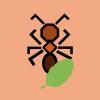Messor marocanus believe.
How are you sure that it's M. marocanus and not some other Messor in the Mediterranean?
Well for one, the most notable feature is the red mesosoma which is a distinctive feature (not just stated upon appearance) according to the “Key to Iberian Messor species” from AntWiki which states “Bicoloured head and gaster brown to black and mesosoma reddish.” This species on the key is also listed as one of the polymorphic species which we can clearly see in the second pic (the best pic for ID). Now yes the key says Iberian, but they are indeed some part of Mediterranean countries; especially Morocco and Portugal and Spain. The identifier (Koafid) just said European part of the Mediterranean countries, but not the specific country of where the specimen was found. So I just identified based off of the pictures given which fit the M. marocanus side a lot more (the key also never really said anything about hairs, scape and other complicated anatomy for exact ID, and kept the description simple).
It was found on southern coast of Corsica. But I can't really see any red colour on the picture, other than my hands
Now mentioning Corsica makes more sense in terms of ID. Let’s scrap the M. marocanus idea, and move to a different group which is a common group among the Mediterranean; especially in Corsica which is the Messor instabilis group. Among the species in the group, the one that sticks out the most is M. wasmanni or Messor wasmanni which is a common species in Corsica as it is native (native in quite a few surrounding countries as well). Now the best way to ID is to get a good macro shot if possible on the occipital area of the head (or behind the head) which according to AntWiki on the Messor kardamenae page, states along with it’s own ID factors in the ID page that other species within the group (meaning M. wasmanni included) should have about 8 or so short erect hairs in that area (this should be done with the workers, but not with the queens as most queens within this group are black and have no ID factors that stand out I believe as there is no key to their group). Use the picture with the workers as reference.















